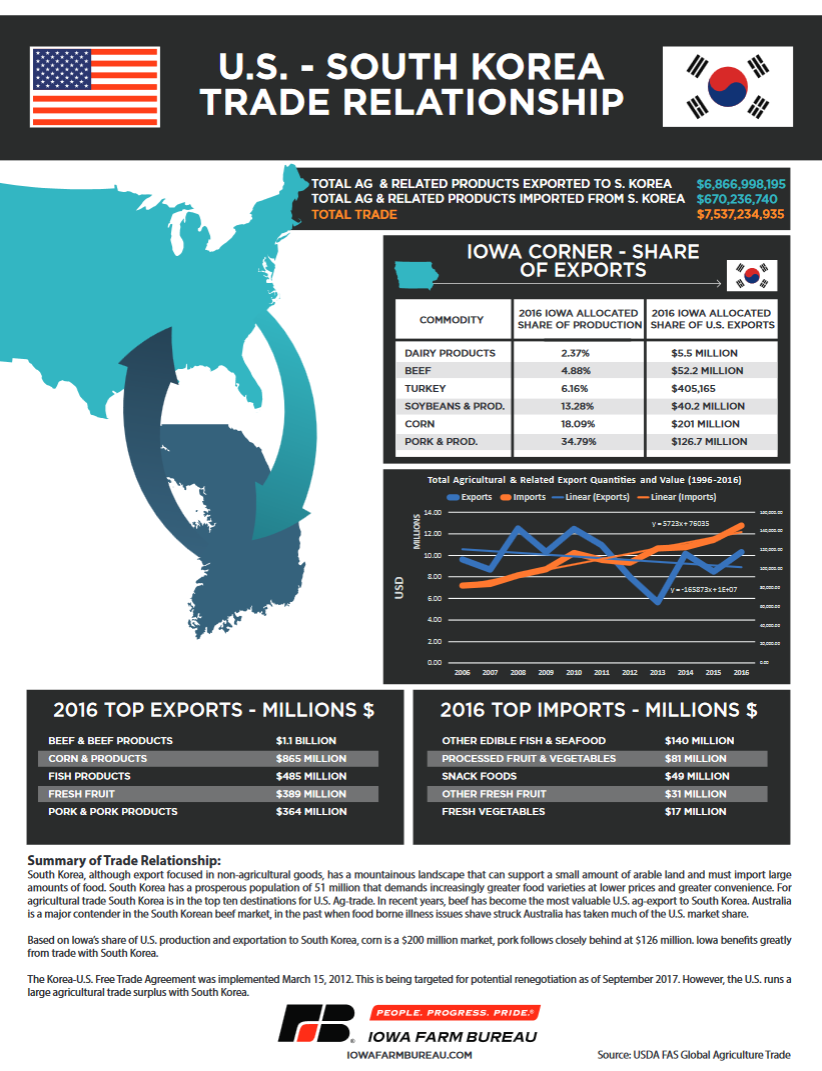Recently the Trump Administration has begun to discuss and prepare to withdrawal from the Free Trade Agreement the U.S. has with South Korea. With many of the trade agreements now coming to the forefront of U.S. trade, it is important to understand the role that these countries play in supporting our agricultural production both in Iowa and across the U.S.
Recently DIS created this info-graphic to illustrate the impact of agricultural trade on Iowa as well as the ag-trade foot print that the U.S. has on South Korea.
South Korea, although export focused in non-agricultural goods, has a mountainous landscape that can support only a small amount of agricultural land usage, they must import enormous amounts of food. South Korea has a prosperous population of 51 million that demands increasingly greater food varieties at lower prices and greater convenience. For agricultural trade South Korea is in the top ten destinations for U.S. agricultural commodities and products. In recent years, beef has become the most valuable U.S. ag-export to South Korea. Australia is a major contender in the South Korean beef market. In the past when food borne illness issues shave occurred, Australia has taken much of the U.S. market share.
Derived from Iowa’s share of U.S. production and exportation to South Korea, corn is a $200 million market, pork follows closely behind at $126 million. Iowa benefits greatly from trade with South Korea.
The Korea-U.S. Free Trade Agreement was implemented March 15, 2012. This is being targeted for potential renegotiation as of September 2017. However, the U.S. runs a large agricultural trade surplus with South Korea of about $6.5 Billion annually.


